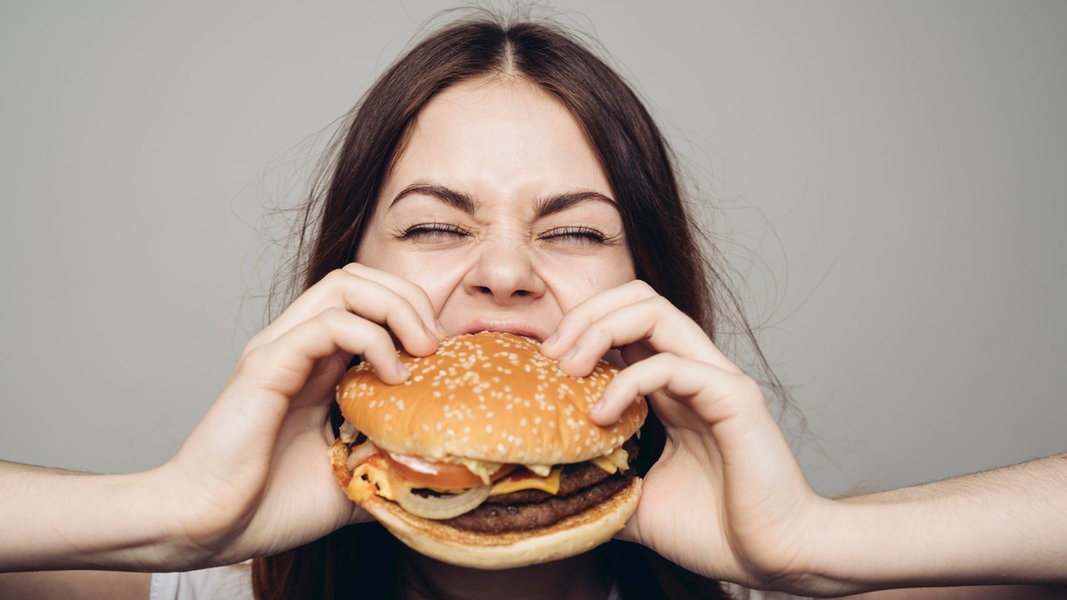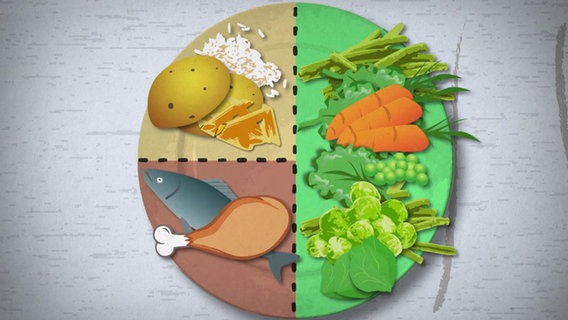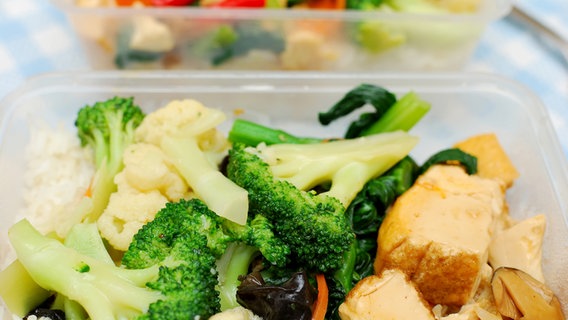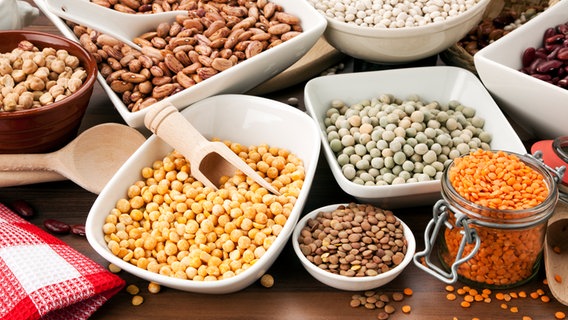Status: 03/20/2023 10:31 a.m
Appetite, hunger, eating and feeling full form a complex interplay that has lost its rhythm in many people. Obesity and dissatisfaction are the consequences. What is happening in the body?
The interaction of hunger and satiety takes place in our body several times a day. The control center is in our brain: in the hypothalamus. This is where the signals that the body sends when it is hungry or full are bundled. But not only the physical processes determine the appetite. External stimuli, such as special smells, the appearance of the food or a special taste also have an influence on our feeling of hunger. Physiological and emotional (hedonic) signals are mutually dependent and strongly linked.
How does the feeling of satiety arise?
Hunger is a warning signal from the body. The organs, especially the brain, need energy to work optimally. Therefore, over time, hunger becomes an overpowering desire. The consequences can be restlessness and aggressiveness. That’s why we try to satisfy hunger as quickly as possible.
When food reaches the stomach, the stomach wall stretches. This is sent to the brain by something called mechanoreceptors. However, stomach stretching alone does not trigger a feeling of satiety. In addition, so-called chemoreceptors in the intestine and liver record how many nutrients have been absorbed. This leads to the release of various hormones that are important for the body’s energy balance, and the pancreas causes the blood sugar level to rise. Microorganisms from the gut also send signals. Only when mechano- and chemo-receptors react and the hypothalamus receives the message of the right hormone level do we feel full. Then the body releases the happiness hormone serotonin, among other things, and signals: “I’m full, I’m satisfied.”
According to studies, a volume of 300 to 400 cubic centimeters must fill the organ for a corresponding stretching of the stomach – about a small to medium-sized portion of pasta. Liquids can also distend the stomach, but these are usually quickly passed on to the intestines.
Hungry or full? Different hormones involved
According to science, there are a variety of hormones that help with hunger and satiety. However, many interactions have not yet been explored. The most important satiety hormones at a glance:
- Leptin gives the body permanent feedback on the energy status. The hormone is coupled to the body’s fat deposits. When leptin levels drop, we get hungry. When we eat, the value increases again and the hormone supports the feeling of satiety.
- Ghrelin is the antagonist to leptin and is also called “hunger hormone”. When the stomach is empty and the body needs energy, the ghrelin level increases. If eaten, the value drops again.
- When fatty acids and amino acids are absorbed through the intestines, Cholecystokinin produced. This hormone is also responsible for the feeling of satiety.
- The digestive hormone GLP-1 also has a satiating effect, it is released when glucose and fatty acids are absorbed.
- The hormones are also affected by the increase in glucose Amylin and Insulin produced, which also contribute to the feeling of satiety.
How long does it take to feel full?
The conscious feeling of fullness usually only sets in after about 20 minutes. Various factors of food composition play a role here:
- liquid or solid food
- energy density of food
- energy content of food
The saturation depends on the hormones, which are also released to different extents with different food compositions. This applies, for example, to sweet foods such as chocolate: They contain a high dose of glucose, from which the body quickly gains energy. So sweets give the body a short-term boost of energy. Unfortunately, it is also very high in calories and usually contains hardly any fiber and other valuable nutrients. The sweet also causes the blood sugar level to rise very quickly and then fall sharply again after the release of insulin, the low blood sugar level triggers feelings of hunger.
But psychological aspects also play a role in the feeling of satiety. Eating in a particularly good restaurant or spending time with people we know affect our feelings of hunger and satiety.
No feeling of satiety – what are the causes?
Our body is programmed to want to absorb available food immediately. But in times when food and snacks are always within reach, this becomes a problem. Also, we often eat to reward ourselves, to relax, or to manage stress. The causes at a glance:
- Chronic stress and Lack of sleep increases cortisol levels, the reward system in the brain triggers the appetite for sweets and fatty foods. The result: Those affected reach for chips or chocolate to relax. Emotions control our behavior and the perception of physical satiety takes a back seat, we no longer perceive them so well. Also, a chronically stressed brain uses less energy, drawing less from food and leaving more to the body. This is how the fat deposits grow because the food is poorly utilized.
- A lack of a natural feeling of satiety can also have psychological causes, triggered for example by trauma. This can be the case with obesity, but also with anorexia (anorexia) or bulimia (bulimia).
- Taste can also be linked to emotions. Sweets are often coined as a reward in childhood. Babies are also very responsive to sweet tastes, which can be associated with affection and emotional warmth, and when we feel the need for it, we reach for something that tastes like inner warmth – chocolate, for example. Because the energy density is high, we can eat a lot of it without the satiety system kicking in.
- Fast food: French fries or burgers have a high energy density with a comparatively small amount. The stomach demands more because it has not yet been stretched enough. Then the food is eaten quickly so that there is no feeling of satiety.
- The hormone leptin and the body’s fat cells are directly linked. The more fat cells there are in the body, the higher the leptin level. If you are overweight, what is known as leptin resistance can develop. This means that those affected no longer have a feeling of satiety. Especially that Belly fat plays an important role here.
- A diet can also mess up the feeling of satiety: If the calorie intake is suddenly severely reduced, the body responds with hunger. The reason is a strong production of the hormone ghrelin. If the diet is broken off now, there will be irritation in the body – just as if the diet is continued and later switched back to normal food.
- drugs like Antidepressants, antiepileptics and antipsychotics, which directly affect the brain metabolism, can trigger a lack of satiety. Diabetes medication, blood pressure medication and cortisone can also have this effect.
- Food cravings often occur when blood sugar drops rapidly and severely. Meals with a lot of sugar or simple carbohydrates can mean that the feeling of satiety does not last long.
Eat slowly and take breaks
Conscious eating is an important step for healthy eating habits and thus also for a feeling of satiety. Important is, to eat mindfully. Already in the mouth we can consciously influence the satiety. Conscious and longer chewing contributes to better satiety. In addition, unprocessed and natural foods fill you up much longer than fast food or ready meals due to their high nutritional value. The consistency of the food also plays an important role: Food that is firm to the bite keeps you full longer than a soup without any side dishes.
experts on the subject
Further information




